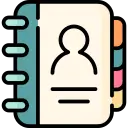Starting an educational pursuit at IGNOU (Indira Gandhi National Open University) is an exciting milestone for many students. One crucial element that stands out in the BCA (Bachelor of Computer Applications) curriculum is the BCA Project. This article offers a comprehensive look at the IGNOU BCA Project, breaking down its significance, the structure, and providing practical tips on how to successfully navigate it.
Decoding the IGNOU BCA Project: An Essential Guide for Students

Understanding the IGNOU BCA Project
The world of computer applications is a blend of both theoretical comprehension and hands-on application. To help students strike this balance, IGNOU's BCA program includes an important element - the BCA Project.
Terming the MCS-044 course, the BCA Project acts as the culminating point for the BCA curriculum. It challenges students to put their accumulated knowledge and skills to the test. The project encourages students to conceive, execute, and showcase a software project in a domain of their choosing, thereby fostering practical skills, innovation, and creative thinking.
Significance of the IGNOU BCA Project
1. Practical Application: It serves as a platform for students to apply the theoretical knowledge and practical skills, they've learned during the course.
2. Development of Problem-Solving Skills: It aids in the cultivation of crucial problem-solving and critical-thinking abilities as students work through the intricacies of software development.
3. Workplace Readiness: Completing a software project provides students with an authentic taste of the professional world, potentially enhancing their career readiness and job prospects.
4. Domain Specialization: It empowers students to delve deep and specialize in a specific area of computer applications, aligning with their interests and career goals.
5. Assessment: The project is a significant part of the final assessment process, and the grade students achieve, plays a substantial role in their final marks.
Navigating Your IGNOU BCA Project
1. Topic Selection: Your project should mirror a domain within computer applications that sincerely intrigues you, ranging from database management systems to artificial intelligence, based on your passion and career objectives.
2. Craft a Detailed Plan: Once you've settled on your topic, create an exhaustive plan. This involves specifying the project's goals, the methods you'll employ, the resources you'll require, and a timeline for completion.
3. Guidance: Seek advice from your assigned mentor or guide for recommendations and insights. Their knowledge can prove invaluable for your project.
4. Execution: With your plan in hand, commence your project. Develop your software, test it, and modify it as required.
5. Documentation: Keep a detailed record of your project's progression. Your project report should encompass the goals, methodology, design, testing, and conclusion.
6. Presentation: Lastly, you'll present your project to a panel. Be prepared to discuss your work in detail and address any questions they may have.
In conclusion
The IGNOU BCA Project is a vital part of the BCA curriculum that merges theoretical learning with practical application. By selecting a topic that resonates with your career goals and investing the necessary effort, you can ensure that your project not only garners excellent grades but also provides you with the skill set and experience to lay the groundwork for future professional success.`
Steps to Create BCA Project
Embarking on a BCA (Bachelor of Computer Applications) project requires a careful and methodical approach, right from the inception of the project idea to its final presentation. This guide provides a structured pathway to successfully build your BCA Project:
1. Identifying the Ideal Topic: The initial and one of the most crucial steps involves selecting a suitable project topic. This topic should harmonize with your interests within the sphere of computer applications, ranging from areas like database management systems and web development to machine learning, or any other field that aligns with your career objectives.
2. Conducting a Thorough Review and Research: Once your topic is set, it's time to dive into an extensive literature review and research on the chosen topic. This process enables you to understand the existing work, the latest advancements, and various methodologies in the field. This step is essential to comprehend the current state of the art and pinpoint the gaps your project could address.
3. Formulating a Problem Statement: Post your exhaustive research, the next task is to frame a concise and clear problem statement. This statement should succinctly describe the issue you intend to address or the condition you aim to enhance through your project.
4. Establishing Objectives: With your problem statement in hand, the next step is to set defined and achievable objectives for your project. These objectives should provide a roadmap for your project and outline what you aim to achieve upon project completion.
5. Designing and Planning the Project: After defining your objectives, you should outline a comprehensive project plan. This plan should encompass the methodologies to be employed, necessary technologies, and the timeline for project completion. With the plan ready, you can start designing your project using appropriate software tools.
6. Executing the Project: This stage is where your project begins to materialize. Start developing your application or writing the code as per your project design. It's advisable to continually test your development work to identify and fix any issues or bugs promptly.
7. Project Testing: After the development phase, it's crucial to rigorously test your project. This ensures that your application operates as planned, and helps in identifying and rectifying any potential problems or bugs.
8. Creating Documentation: This step involves documenting every stage of your project, including the methodologies employed, tools used, testing procedures, and results. Your documentation should offer a clear overview of your project, tracing your journey from problem identification to resolution.
9. Presenting and Submitting the Project: The final milestone involves presenting your project. Prepare a comprehensive presentation that covers all project aspects, and be prepared to answer any questions from the panel.
Following a successful presentation, submit your project and the associated documentation.
In conclusion
remember that the BCA Project isn't just a mandatory final-year task; it offers you an opportunity to demonstrate the skills and knowledge you've accumulated throughout your course. It serves as a stepping-stone toward your professional aspirations, leaving a strong impression on your academic record.







